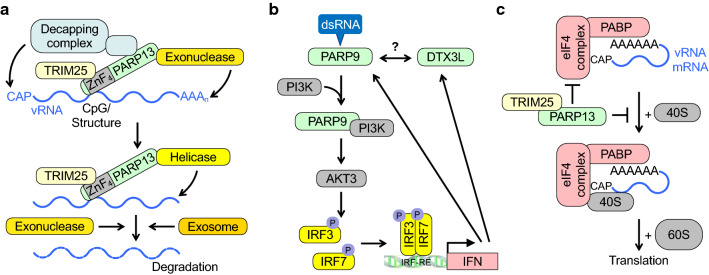Fig. 2.
PARPs regulate the stability and the translation of viral and cellular RNA. a The Zinc fingers (ZnF) of PARP13 sense CpG-rich RNA, possibly in the context of secondary structure elements. CpG-rich RNA is typically a hallmark of non-self RNA. This is enhanced by TRIM25. PARP13 also recruits exonucleases, decapping enzymes, helicases and the exosome, which together promote RNA degradation. b PARP9 senses viral dsRNA and promotes the phosphorylation and activation of IRF3 and 7 through PI3K and AKT3 and subsequently the activation of IFN genes. This activation is not dependent on signaling complexes used typically by PRRs. These signaling events may function as a feed-forward loop. Whether this activity of PARP9 requires DTX3L is unclear. c PARP13 inhibits translation of certain cellular and viral RNAs by interfering with the eukaryotic initiation factors and the binding of the 40S ribosomal subunit to mRNA. The specificity of these effects is not fully understood

